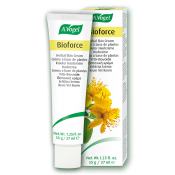Did something bite me? What’s going on?
By the sounds of it, you have nothing to fear from a potential creepy crawly that decided you looked like a good meal. A more reasonable explanation is the skin reacting to something in your new scarf, and whether that’s a chemical or the fabric itself will require further investigation.
What are the symptoms of allergic contact dermatitis?
The suffix –itis comes from the Greek itēs which stands for inflammation whereas derma-, as you may have already guessed, stands for skin. There are five cardinal signs of inflammation which find their name from Latin origins:
- Calor – the area tends to heat up due to increased blood supply to the area
- Dolor – pain occurs due to the action of kallikrein and bradykinin, pro-inflammatory agents that also stimulate pain receptors
- Functio laesa – loss of function often accompanies the inflammatory response as the limb swells. The body tries to get the wounded area to rest by limiting its abilities.
- Rubor – the area begins to show signs of redness as the expansion of blood vessels bring extra blood to the area due to the agent histamine.
- Tumor – the expansion of blood vessels and extra blood cause local swelling under the tissue as fluid leaks out of the vessels due to agents such as histamine and serotonin.
What are the most common causes?
According to the Canadian Dermatology Association, the most common causes of allergic contact dermatitis are due to plants such as poison ivy, perfumes, metals, cosmetic preservatives, and dyes.
Why does it happen?
Typically, the skin acts as a barrier in a few different ways. To start, there is a constant secretion of slightly acidic natural oils that slow bacteria from getting deeper into the body and also make the environment a little less hospitable for them with the acid. Another defense mechanism happens because the skin is layered.
Deeper in the skin is where the blood vessels and nerve cells are, it’s also the nursery for new skin cells. As these cells mature, they begin making the journey to the outer layers of the skin. Towards the outside, away from all the nutrients and nourishing vessels, the cells start to die and slough off. This is the endless cycle of dead skin cells and as those fall off, they take potentially dangerous bacteria with them, preventing the uprising of infection.
However, contact with allergens leads to an immune reaction that leads to the familiar symptoms of red, itchy, and inflamed skin. The body mistakenly identifies the item in contact as a threat and causes a reaction in the tissue.
Are some occupations more at risk than others?
Absolutely! Workers such as those in agriculture are exposed to a host of allergens such as oats, fertilizers, pesticides, herbicides, and disinfectants just to name a few. Other high exposure occupations include carpenters, florists, hairdressers, textile workers, and mechanics. Whether it’s dyes, formaldehyde, glues, resins, nickel, cobalt, or rubber gloves, contact with these substances can quickly cause the skin to break out in an inflammatory response as described before.
How can I prevent this from happening again?
As with any potential allergen or skin irritant, a moment to read the nationwide Workplace Hazardous Materials Information System (WHMIS) sheet of the substance you are handling can help mitigate accidents and prevent potentially lethal accidents.
Soothing creams are another way to both counteract the condition and provide hydration to the irritated and often scratched-to-death area. Some options include Bioforce, Echinacea, and Comfrey cream, but it’s important to read the ingredients and make sure you aren’t allergic to any of the ingredients, potentially further inflaming the area.
A sample of the herbs in these products include Calendula officinalis, Hamamelis virginiana, Echinacea purpurea, and Symphytum officinale. These have been shown to reduce pain and inflammation, control diaper dermatitis in infants, and specific to Echinacea – can even increase the amount of lipids present in the outer layers of the skin.
Taking steps to ensure a strong immune system is another means of avoiding the condition. Studies have shown that individuals who have had their immune systems suppressed through agents such as antibiotics or radiation therapy may find their allergic contact dermatitis exacerbated.
Switch up those cosmetics!
More often than not, cosmetics contain ingredients that can be irritating to the skin, so make sure you do your research to determine what the ingredients are. Some companies are very transparent about what goes into their products, even including a part on their website where you can learn about each individual ingredient. There are also apps that allow you to scan the barcode of a product and will assign a safety rating based on the ingredients.
Should I go see my primary care provider?
If this is the first time the condition has appeared, it’s probably wise to visit your healthcare provider. It’s important that they rule out other skin conditions such as a tinea infection, a common fungus that can lead to familiar conditions such as athlete’s foot or jock itch. They may refer you to an allergist who can run tests to determine what exactly is causing your contact reaction.
References
https://bjsm.bmj.com/content/bjsports/38/3/248.full.pdf
https://www.ncbi.nlm.nih.gov/pmc/articles/PMC3064252/
https://www.ncbi.nlm.nih.gov/pubmedhealth/PMH0072482/
https://www.ncbi.nlm.nih.gov/pubmed/8513841
https://www.ncbi.nlm.nih.gov/pubmed/14501145
https://www.ncbi.nlm.nih.gov/pubmed/19839974
https://www.ncbi.nlm.nih.gov/pubmed/20823796
https://www.ncbi.nlm.nih.gov/pubmed/22606064
https://www.ncbi.nlm.nih.gov/pubmed/23224633
https://www.ncbi.nlm.nih.gov/pubmed/24267417
https://www.ncbi.nlm.nih.gov/pubmed/24280482
https://www.ncbi.nlm.nih.gov/pubmed/24314385
https://www.ncbi.nlm.nih.gov/pubmed/27185422
https://www.ncbi.nlm.nih.gov/pubmed/28610718





